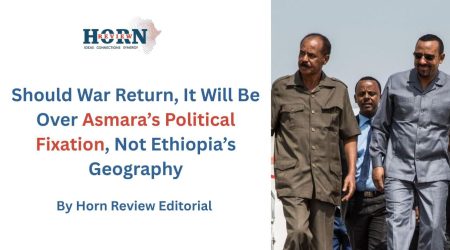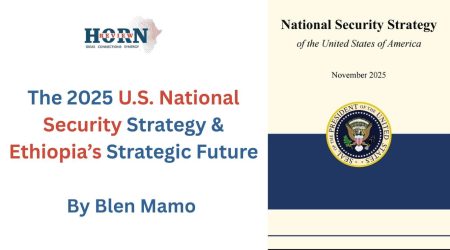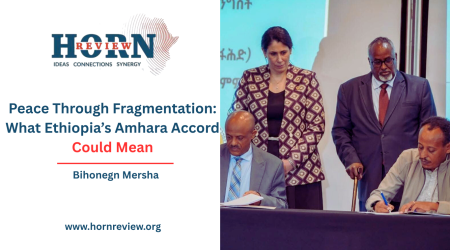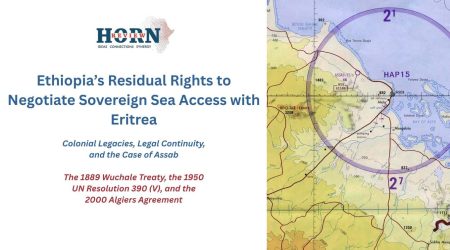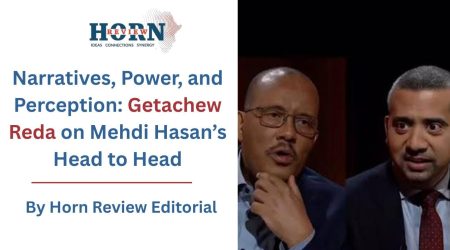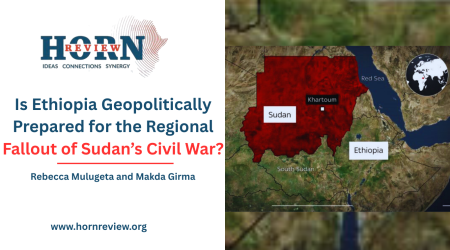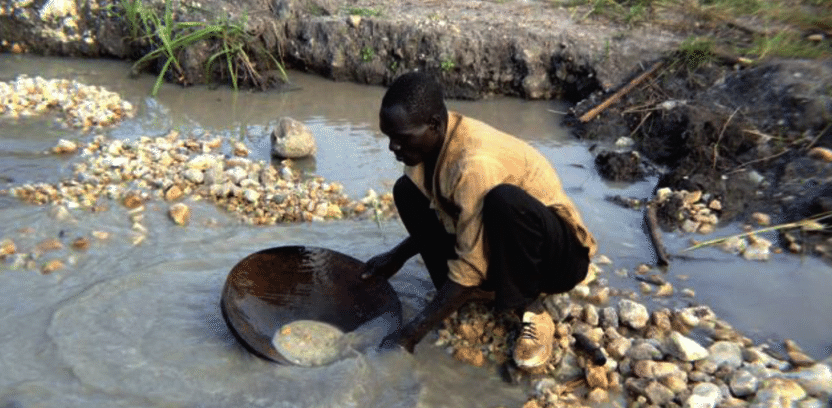
30
Jul
Thinking Beyond the Veins: Confronting Ethiopia’s Gold Paradox for Sustainable Growth
Ethiopia is currently in critical juncture, caught between the enormous potential of its mineral resources and the persistent structural weakness that prevent this potential from being fully utilized. If properly utilized abundant mineral resources like gold, lithium, potash and tantalum that lie beneath its untamed highlands and vast plateaus could form the foundation of a strong and diverse economy. This is not merely wishful thinking, it is a key element of a nation’s economic strategy that is prominently stated in the government’s Ten-Year Perspective Plan, describing it as a vital tool for promoting industrialization, stabilizing foreign reserves, and creating jobs. (Office of the Prime Minister, 2021). This is not just a hopeful speculation, the contradiction is both evident and expensive, though, as Ethiopia anticipates record legal gold revenues this year, an even greater portion of its gold stealthily disappears through illegal channels, undermining the foreign exchange required to fund its development goals. (National Bank of Ethiopia, 2025)
Ethiopia’s Gold must stop being a “pipeline for smugglers” and instead become a vital component of its macroeconomic stability, Prime Minister Abiy Ahmed addressed to the House of People’s Representative in July, 2025. He made an open comment recognizing that while legal gold exports were projected to exceed USD 2.2 billion this fiscal year, a record high due to enhanced formal production and more aggressive marketing account 61% of the nation’s total gold output was still lost to illicit and informal markets. (Abiy, 2025; National Bank of Ethiopia, 2025). With external debt obligations and rising global borrowing cost making liquidity more crucial than ever, this translates into an estimated USD 3.2 billion annually escaping the National Bank’s control, far surpassing official earnings and depriving Ethiopia of much-needed hard currency (African development Bank, 2025)
At the core of this dilemma is the artisanal and small-scale mining (ASM) industry. About 1.3 million people are directly employed by this enormous informal economy, and indirectly supports another 8 million Ethiopians, primarily in rural areas, with few alternative income options (World Bank, 2025). ASM is both essential and problematic, accounting for roughly two-thirds of Ethiopia’s foreign exchange earnings from mining (World Bank, 2025). For many artisanal miners, it seems much more appealing to sell unofficial brokers who offer immediate cash, often at a black-market rate much higher than official window, that to navigate what is viewed as a cumbersome, unpredictable and frequently opaque formal system (independent Research on ASM Dynamics. 2025)
The Government’s initiatives to tackle the disparities have been significant. In order to encourage investment, Ethiopia has implemented a range of fiscal initiatives reducing the corporate tax on mining from 35% to 25% and lowering royalty rates on precarious metal (Ethiopian Ministry of Mines, 2020). It has aimed to simplify administrative difficulties by establishing a “one-stop-shop” that unifies licensing procedures across sixteen agencies, which by early 2025, had reportedly cut average wait times by half (Private Sector Investment Climate Survey, 2025)
This year, the country made a significant stride addressing the serious health and environmental effects of the basic extraction techniques by opening East Africa’s largest mercury free gold processing facility in Gambella. However, there are persistent structural and imitative issues with these policy changes. With no assurance that they will be able to access the dollars and Euros to buy equipment or replacement parts, miners usually face long delays, sometimes weeks waiting for payments in local currency. The National Bank of Ethiopia’s monopoly on gold purchases for export, designed to centralize foreign exchange inflows, fails to resolve this problem. Meanwhile, informal traders are frequently linked to sophisticated smuggling networks operating along Ethiopia’s porous borders with Sudan, Kenya, Somalia. They commonly offer immediate cash settlement at a price supported by the parallel foreign exchange market (Global initiative, 2025). This discrepancy not only perpetuates but also actively fuels a shadow economy that depletes billions from the formal economy each year.
The market incentives that currently encourage informality need to be transformed. The national bank of Ethiopia should establish a dedicated foreign exchange window to provide certified gold exporters with rapid access to hard currency at competitive rates, while also aligning local prices with global spot prices. through mobile money platforms, which would help bypass the cash-heavy systems that enable smuggling, miners could get immediate, traceable payments. Furthermore, the goal of formalization must be to improve economic opportunities for small-scale miners. This entails going beyond basic registration programs to implement tailored microfinance solutions, subsidized or micro leased mercury-free technologies, and government-regulated buying centers that guarantee equitable and transparent pricing, all of which are based on Tanzania’s successful mineral exchange. Without these significant incentives, miners may swiftly revert to informal channels if formalization appears to be a bureaucratic burden or means of obtaining higher taxes.
Any serious effort to address Ethiopian gold leakage must also dismantle the complex smuggling and protection networks that have developed around this trade. In order to eradicate local facilitators who profit from illicit flows, INTERPOL’s 2025 operations in East Africa highlight the fact that these criminal networks often operate across borders, needing coordinated, intelligence-driven actions along with strong anti-corruption measures. Ethiopia’s gold is more than just a commodity, it is a strategic asset that potentially can support the nation’s transformation from reliance on external funding to resource-driven development. The contradiction of growing legal exports and even higher illegal outflows underscores the substantial work that still lies ahead, even though the recent reforms have laid a strong foundation.
The time for small, gradual changes has passed, said Prime Minister Abiy. Ethiopia must take immediate, decisive action to dismantle long-standing informal systems, foster genuine partnership with the millions of artisanal miners who bear the risk of ongoing leakage as well as the promise of shared prosperity. This ability to capitalize on this moment will shape not only the future of the nation’s mining industry but also Ethiopia’s broader goals for sustainable, self- sufficient growth. Ethiopia has a fantastic opportunity here, and it must not be permitted to pass through its borders in silence once more.
By Bezawit Eshetu,Researchers,Horn Review
Reference
- African development bank. (2025). Ethiopia economic outlook 2025: navigating global tightening and commodity dependence
- Ethiopian Ministry of Mines. (2020). Mining fiscal incentives and policy reforms: Investment Prospectus.
- Global initiative against transnational organized crime. (2025). Illicit gold flows in East Africa: Smuggling networks and regional vulnerabilities.
- Independent Research on ASM Dynamics. (2025). Behavioral and Economic drivers of informality in Ethiopia’s artisanal mining sector.
- National Bank of Ethiopia. (2025). Annual monetary policy and balance of payments report 2024/25
- Office of the prime minister. (2021). Ethiopia’s Ten-Year development plan (2021-2030).
- Private Sector Investment Climate Survey. (2025). Ethiopia business climate assessment: mining sector highlights.
- World Bank. (2025). Formalizing artisanal and small-scale mining in Ethiopia: opportunities for inclusive growth.

